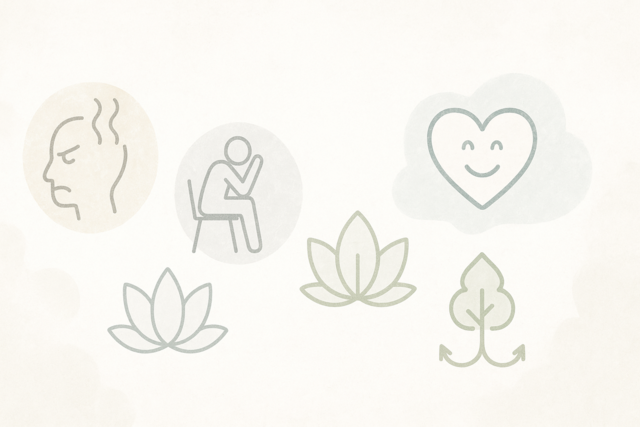At the conclusion of this article, you will be able to:
-
Define the term "token economy;"
-
Understand how a token economy works, how it is used, and its benefits;
-
Understand how to create, maintain, and terminate a token economy system in the classroom.
Teachers face many challenges in the modern classroom � electronic distractions, too high of a student-teacher ratio, inattentive or disruptive students. One tangible, excellent way to encourage appropriate student behavior is by implementing a token economy.
What Is a Token Economy?
The Encyclopedia of Mental Disorders defines a token economy as a behavior modification system that utilizes some form of token to encourage the increase of desirable behavior, and the decrease of undesirable behavior. Tokens are provided immediately following display of the desired behavior, and are collected and eventually exchanged for a reward, such as desired objects or privileges. Token economy systems are used in a number of settings, including penal institutions, addiction treatment facilities, care centers, and group homes. Token economies have been used for quite some time in mental health facilities; doctors and staff utilize token economies to control many aspects of patient behavior, from basic hygiene behaviors (brushing teeth, wearing clean clothes, using the toilet), to more complex behaviors, such as temper control and interpersonal interactions. However, you don't need a PhD in behaviorism to use a token economy; these techniques work equally well at home, or in the classroom.
How a Token Economy Works
Token economies offer consistent reminders of goals obtained and the promise of a cumulative and high-value reward. The desire for tokens is a learned association. The tokens, in and of themselves, have no intrinsic value; their importance rests purely in what can eventually be obtained by collecting and exchanging them. Tokens are merely a "marker" or reminder of success, and the more you collect, the greater or more desirable are the choices. Sounds a bit like working to earn money, doesn't it? It is indeed. It isn't pieces of funny, green paper or numbers in a bank account one really wants (after all, you can't actually eat money or drive it to the beach); it is what the money can buy � a nice car, entertainment, comfort, enjoyment. So it is with a token economy � like adults, children will repeat reinforced behaviors to obtain a cumulative reward.
Raymond Miltenberger, PhD, has compiled a list of seven steps
toward implementing a token economy. First, determine the target behavior. In the classroom or at home, target behaviors may include working quietly, putting toys away without being asked, settling down for a nap without tantrums or argument, or washing hands before lunch.
Second, choose the tokens to be used.
Tokens should be simple, inexpensive, reusable, difficult to duplicate, easy to maintain, and simple to secure or transport. Ensure that tokens only send positive messages � no humor or visual references that might harm someone emotionally or psychologically. Stick to attractive, colorful, simple items, such as poker chips. Tokens can be kept at a student's desk, on the child's person (this works better with older, more responsible age groups, such as middle and high school students), or on a chart in the classroom (gold stars or stickers work well). What matters most is that the token is appealing and helps make the system "real" for students. A "real world" example of this is the punch card system used by many vendors � customers collect unique hole punches (or stamps) on a card the vendor provides, and when the card is full, the customer redeems the card for discounts or free merchandise. How many of us arrange our shopping trips based on filled cards or discounts we're striving for? Exactly! Punch cards can be used with students as well, with equally successful results.
Third, select the final rewards (items that can be obtained by trading in the tokens). These are called the backup reinforcers. Backup reinforcement items can be tangible -- such as stickers, toys, or games -- or intangible rewards, such as extra play time or other enjoyable activities.
Fourth, determine the reinforcement schedule. Remember, the goal is to decrease the amount and/or frequency of rewards, while encouraging the students or participants to increase the complexity of their behavior.
Fifth, determine the exchange criterion. This is the number of tokens required to obtain a given reward. Exchange criterion can include larger reward choices for greater numbers of tokens. For example, if tangible rewards are being offered, a package of stickers may cost 25 tokens, while an entire "craft set" that includes stickers, colored pencils, art paper, etc. may cost 150 tokens. Make the token "pricing" appropriate for the item's cost and perceived value, bearing in mind prices need to be fair and attainable. If participants cannot hope to earn a high-value prize within a reasonable amount of time, motivation to participate will decrease, and your token economy will be unsuccessful.
For the sixth step, specify a time and place for token exchange. Do not allow exchanges outside of the appointed time(s). Participants must observe all the rules regarding the token economy to obtain rewards. In fact, if you have trouble with participants who wish to count their tokens or "shop" at inappropriate times, you may wish to implement a loss-of-token penalty for doing so. This "token loss," called a response cost component, is Miltenberger's seventh, albeit optional, step. Some token economies, such as the bead system, have no cost component. A response cost component is a specified rate of token loss per incident of undesirable behavior (or behaviors) you wish to reduce or eliminate. Behaviors such as hitting or throwing things are excellent examples of target behaviors to attach to a response cost component.
More Keys to Initiating and Maintaining a Successful Token Economy
There are a few more key elements required for a successful token economy. As mentioned previously, it is very important to begin by observing the children and noting each individual's behavior. Next, target behaviors (those eligible for reward and any with cost components attached) must be clearly defined. Everyone involved needs to be "on the same page" � teachers, parents, children, other staff - or the token economy will not be effective.
Ensure that everything is explained beforehand in simple terms appropriate for the age group in question. Also clearly define the number of tokens awarded or lost per incident, and when tokens will be awarded. Initial requirements and opportunities to earn tokens should be more numerous, and tokens easier to obtain, at the start, and become more difficult to earn, and less frequently distributed, as the system progresses; however, it is important to remember that raising the bar too high, too quickly, will discourage students and lead to failure of the token economy system. Goals and rewards require adjustment throughout the system � the goal is to gradually increase the requirements as the children become proficient in exhibiting target behaviors without setting goals out of reach. In research, a situation where the requirements are so difficult that no one can perform well is called a floor effect. Essentially, the participants can't "get off the floor" because the requirements are too extreme. The ceiling effect is the opposite - requirements are set so low that everyone "reaches the top" too quickly. If either of these effects occurs, it is the fault of the researcher, who must then adjust the experiment appropriately to obtain successful trials. So it is for anyone utilizing behavior management techniques. Both floor and ceiling effects must be avoided for a token economy to be successful.
Another important element is the backup reinforcer. Token economies work best when the participants have a say in the options for rewards. After all, if the children aren't interested in the "ultimate" prize, they certainly won't be motivated to participate. Backup reinforcers need not be expensive, just desirable.
Lastly, it is crucial that rewards or cost components are given or taken immediately following the behavior. It is vital to the success of a token economy that the consequences (good or ill) of target behaviors become strongly associated with the gain or loss of tokens, which can only occur if the response of the teacher or parent is immediate and consistent. If not, the association will weaken (or never develop at all), and the token economy will be ineffective (or fail completely).
Ending a Token Economy
In the classroom, there is no need to create an end plan � the system will end naturally as the school year comes to a close. At home, parents will want to intersperse tangible reinforcements with praise-oriented reinforcement, until the reinforcers are no longer needed.
A token economy is a very flexible reinforcement system. It can be tailored to all age groups, time frames, and reward levels.




























